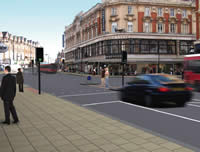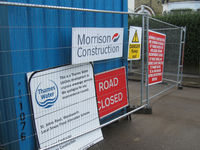 I went along to the Thames Water “drop-in” for Eccles Road residents affected by the extensive sewer works last night. It was certainly a useful session to find out more about the project, if not useful in getting any commitment to compensation for residents affected by the disturbance. However, it was good to see Thames Water taking the initiative as I think they would agree their communication with residents hasn’t been great throughout the process.
I went along to the Thames Water “drop-in” for Eccles Road residents affected by the extensive sewer works last night. It was certainly a useful session to find out more about the project, if not useful in getting any commitment to compensation for residents affected by the disturbance. However, it was good to see Thames Water taking the initiative as I think they would agree their communication with residents hasn’t been great throughout the process.
The works are needed to provide extra sewer capacity for the area and Thames Water hope to have them finished by the end of next month. So the good news for residents is that the disturbance will soon be over, however, I know many feel that might just be the start of their problems.
Repairs to damage
Thames have undertaken to independently survey any house where the resident feels damage has been caused by the Thames works, and, where damage is found Thames will cover the cost of repairs. Thames Water had surveyed several houses in the street before the work started so have some benchmarks to give an idea of what will have happened as a result of the vibration associated with the digging and tunnelling.
They also have to repair the road and pavements they have damaged to the satisfaction of the council. Clearly Wandsworth is not going to want to pick up the tab for damage caused by a utility company, so will be checking to make sure the road is left in a good state.
Compensation
On the issue of compensation, however, they were resolute that none would be offered. Their argument was that it was difficult to put a value on the disruption, to scale it appropriately and totally unaffordable when it would have to be paid to anyone affected by their works across the region – essentially it raised so many problems it was better not to bother. While I can understand their stance, it is very disappointing for residents with young children who have had to tolerate generators outside their home for months on end.
I’ve asked for more details on their repair scheme, and will post them when it comes, and will continue to pressure for some compensation for badly affected residents, though I fear Thames Water will not shift their position.
Thames Water are holding their drop-in sessions every Tuesday until the project is completed. You can pop along anytime between 6pm and 9pm at 91 Eccles Road. Alternatively they have information on their website at thameswater.co.uk/battersea or by calling 08459 200 800 (of course, nothing could be that straightforward, you have to choose option 1, then option 5 then give your address and reference BB 78393).
Can Eccles Road remain closed?
The next question for many residents will be whether the road can remain closed to traffic. I have already raised this issue with the council department responsible. In the very short term, the answer is almost certainly no. Battersea Rise is a TfL Red Route, so we would not be able to make any changes to the road without a lengthy consultation with TfL.
Even then, we would have to consider the effect any change would have on traffic flows; changing the status of Eccles Road will not change the general patterns of driving, people will still head from A to B and we will need to study the alternative routes they might take and the effect it would have on nearby (and not so nearby) roads – especially as the most obvious alternative routes are also residential streets. Again, I’ll post more details when they are available along with the council’s formal response to the petition I presented at the last council meeting.
 Following on from my last post about the no right turns from Clapham Common Northside, the consultation letter and form should now have been delivered to houses to the south of Lavender Hill.
Following on from my last post about the no right turns from Clapham Common Northside, the consultation letter and form should now have been delivered to houses to the south of Lavender Hill.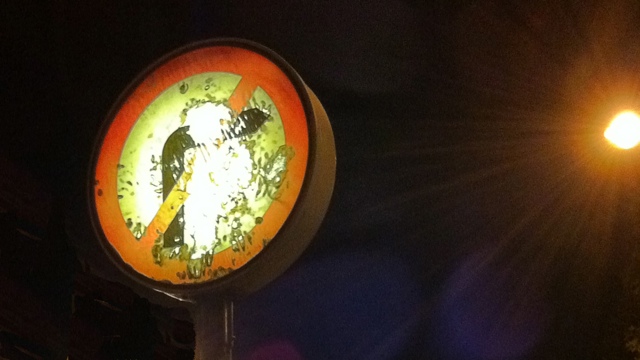
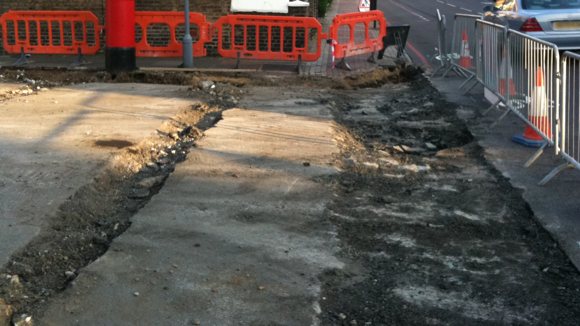 Transport for London have finally started working on the entry treatments to the Shaftesbury Park Estate that will make it a 20mph zone.
Transport for London have finally started working on the entry treatments to the Shaftesbury Park Estate that will make it a 20mph zone.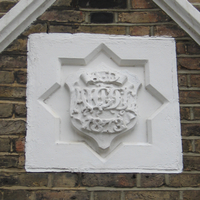 I’ve posted about this a few times before, but investigated a little further when asked by a resident recently if it was still happening. They had not seen any of the works they expected taking place.
I’ve posted about this a few times before, but investigated a little further when asked by a resident recently if it was still happening. They had not seen any of the works they expected taking place. I went along to the Thames Water “drop-in” for Eccles Road residents affected by the extensive sewer works last night. It was certainly a useful session to find out more about the project, if not useful in getting any commitment to compensation for residents affected by the disturbance. However, it was good to see Thames Water taking the initiative as I think they would agree their communication with residents hasn’t been great throughout the process.
I went along to the Thames Water “drop-in” for Eccles Road residents affected by the extensive sewer works last night. It was certainly a useful session to find out more about the project, if not useful in getting any commitment to compensation for residents affected by the disturbance. However, it was good to see Thames Water taking the initiative as I think they would agree their communication with residents hasn’t been great throughout the process.
